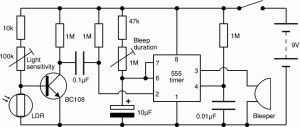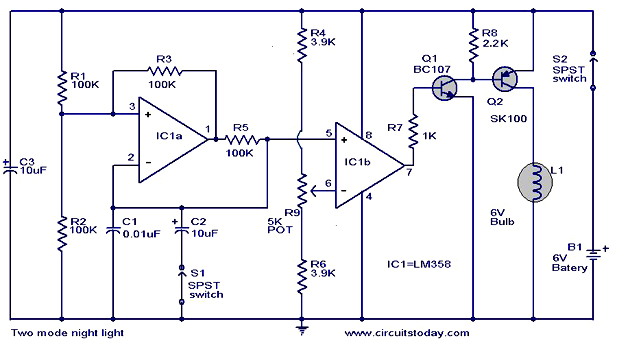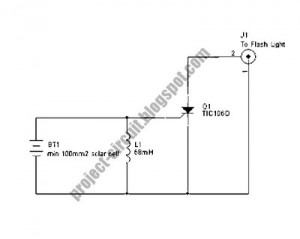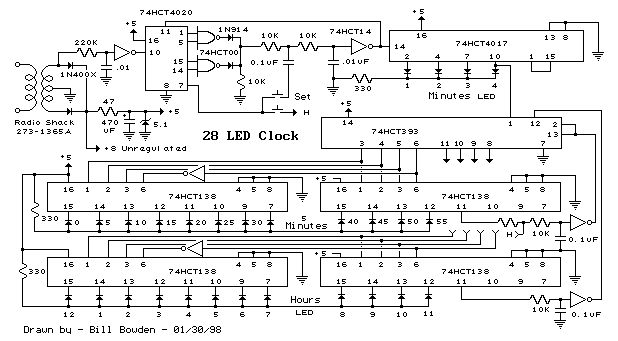
Ne7555 Timer For Light Sensitive Alarm Sensor

This circuit illustrates the NE555 timer used in a light-sensitive alarm sensor circuit diagram. Features include the ability to detect a sudden shadow falling on the sensor.
The NE555 timer is a versatile integrated circuit widely utilized in various timing, delay, pulse generation, and oscillator applications. In this specific configuration, the NE555 timer operates as a monostable multivibrator, which triggers an alarm when a light interruption is detected.
The circuit typically consists of a light-dependent resistor (LDR) that serves as the primary sensor. The LDR changes its resistance based on the intensity of the ambient light. When a sudden shadow or a decrease in light intensity occurs, the resistance of the LDR increases, causing a voltage drop across it. This change is detected by the NE555 timer, which is configured to respond to the threshold voltage at its trigger pin.
The circuit may include a resistor-capacitor (RC) network connected to the NE555 timer, which determines the timing duration of the alarm. The output from the timer can be connected to a relay or a transistor to activate an alarm or any other output device, such as a buzzer or LED indicator.
Power supply considerations for the circuit are essential, as the NE555 timer typically operates within a voltage range of 4.5V to 15V. Proper decoupling capacitors should be placed near the power supply pins of the IC to ensure stable operation.
Overall, this light-sensitive alarm sensor circuit utilizing the NE555 timer is an effective solution for applications requiring automatic detection of light changes, providing an audible or visual alert in response to sudden shadows or light interruptions.This circuit shows about Ne7555 Timer For Light Sensitive Alarm Sensor Circuit Diagram. Features: detects a sudden shadow falling on the .. 🔗 External reference
The NE555 timer is a versatile integrated circuit widely utilized in various timing, delay, pulse generation, and oscillator applications. In this specific configuration, the NE555 timer operates as a monostable multivibrator, which triggers an alarm when a light interruption is detected.
The circuit typically consists of a light-dependent resistor (LDR) that serves as the primary sensor. The LDR changes its resistance based on the intensity of the ambient light. When a sudden shadow or a decrease in light intensity occurs, the resistance of the LDR increases, causing a voltage drop across it. This change is detected by the NE555 timer, which is configured to respond to the threshold voltage at its trigger pin.
The circuit may include a resistor-capacitor (RC) network connected to the NE555 timer, which determines the timing duration of the alarm. The output from the timer can be connected to a relay or a transistor to activate an alarm or any other output device, such as a buzzer or LED indicator.
Power supply considerations for the circuit are essential, as the NE555 timer typically operates within a voltage range of 4.5V to 15V. Proper decoupling capacitors should be placed near the power supply pins of the IC to ensure stable operation.
Overall, this light-sensitive alarm sensor circuit utilizing the NE555 timer is an effective solution for applications requiring automatic detection of light changes, providing an audible or visual alert in response to sudden shadows or light interruptions.This circuit shows about Ne7555 Timer For Light Sensitive Alarm Sensor Circuit Diagram. Features: detects a sudden shadow falling on the .. 🔗 External reference





